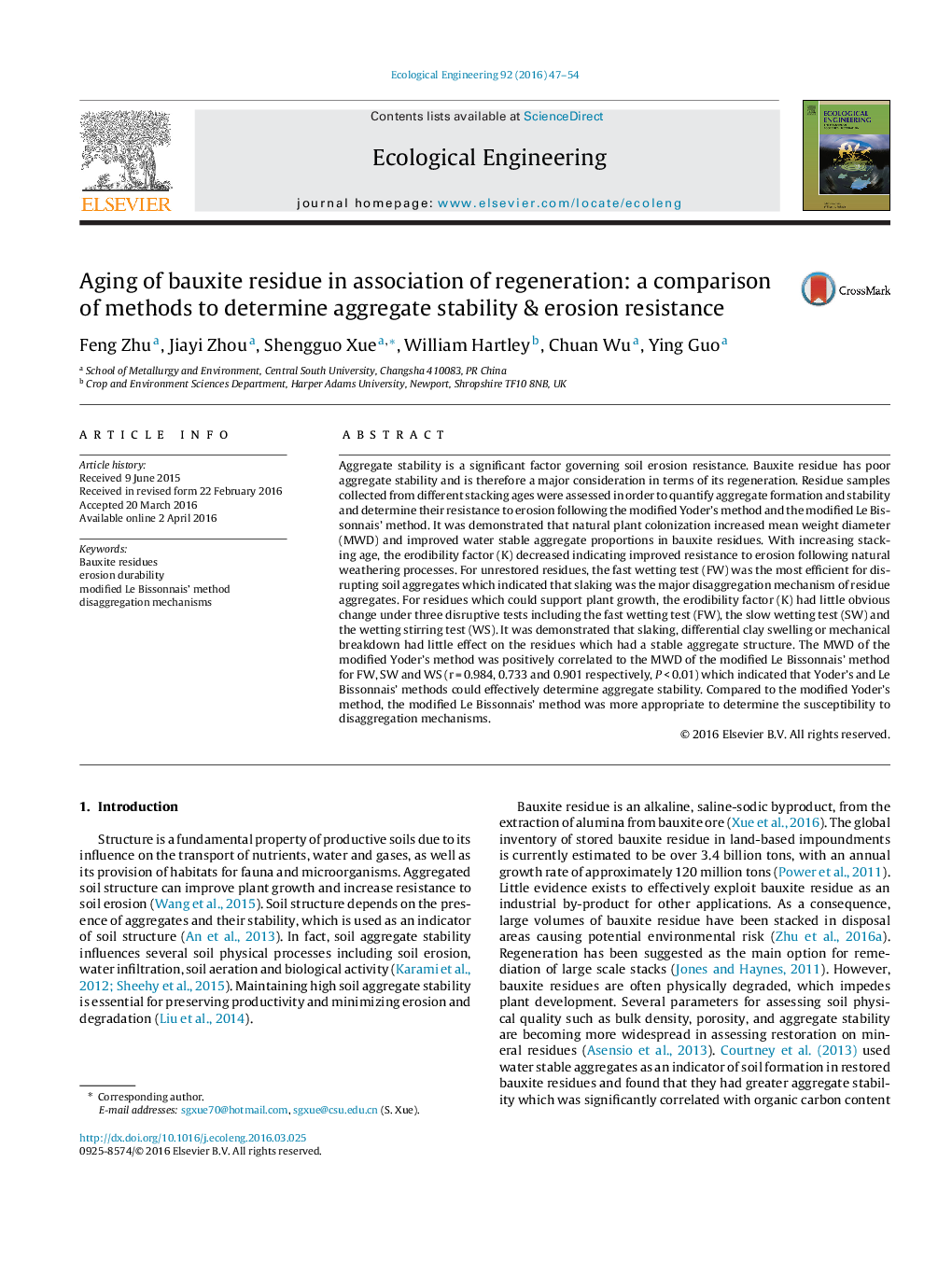| Article ID | Journal | Published Year | Pages | File Type |
|---|---|---|---|---|
| 4388608 | Ecological Engineering | 2016 | 8 Pages |
•Aggregate stability and erosion durability of bauxite residues in different stacking age were considered.•Plant colonization increases aggregate stability and erosion durability.•For unrestored residues, slaking is the major disaggregation mechanism.•The Le Bissonnais method was more appropriate to understand the susceptibility of bauxite residues to disaggregation mechanisms.
Aggregate stability is a significant factor governing soil erosion resistance. Bauxite residue has poor aggregate stability and is therefore a major consideration in terms of its regeneration. Residue samples collected from different stacking ages were assessed in order to quantify aggregate formation and stability and determine their resistance to erosion following the modified Yoder’s method and the modified Le Bissonnais’ method. It was demonstrated that natural plant colonization increased mean weight diameter (MWD) and improved water stable aggregate proportions in bauxite residues. With increasing stacking age, the erodibility factor (K) decreased indicating improved resistance to erosion following natural weathering processes. For unrestored residues, the fast wetting test (FW) was the most efficient for disrupting soil aggregates which indicated that slaking was the major disaggregation mechanism of residue aggregates. For residues which could support plant growth, the erodibility factor (K) had little obvious change under three disruptive tests including the fast wetting test (FW), the slow wetting test (SW) and the wetting stirring test (WS). It was demonstrated that slaking, differential clay swelling or mechanical breakdown had little effect on the residues which had a stable aggregate structure. The MWD of the modified Yoder’s method was positively correlated to the MWD of the modified Le Bissonnais’ method for FW, SW and WS (r = 0.984, 0.733 and 0.901 respectively, P < 0.01) which indicated that Yoder’s and Le Bissonnais’ methods could effectively determine aggregate stability. Compared to the modified Yoder’s method, the modified Le Bissonnais’ method was more appropriate to determine the susceptibility to disaggregation mechanisms.
